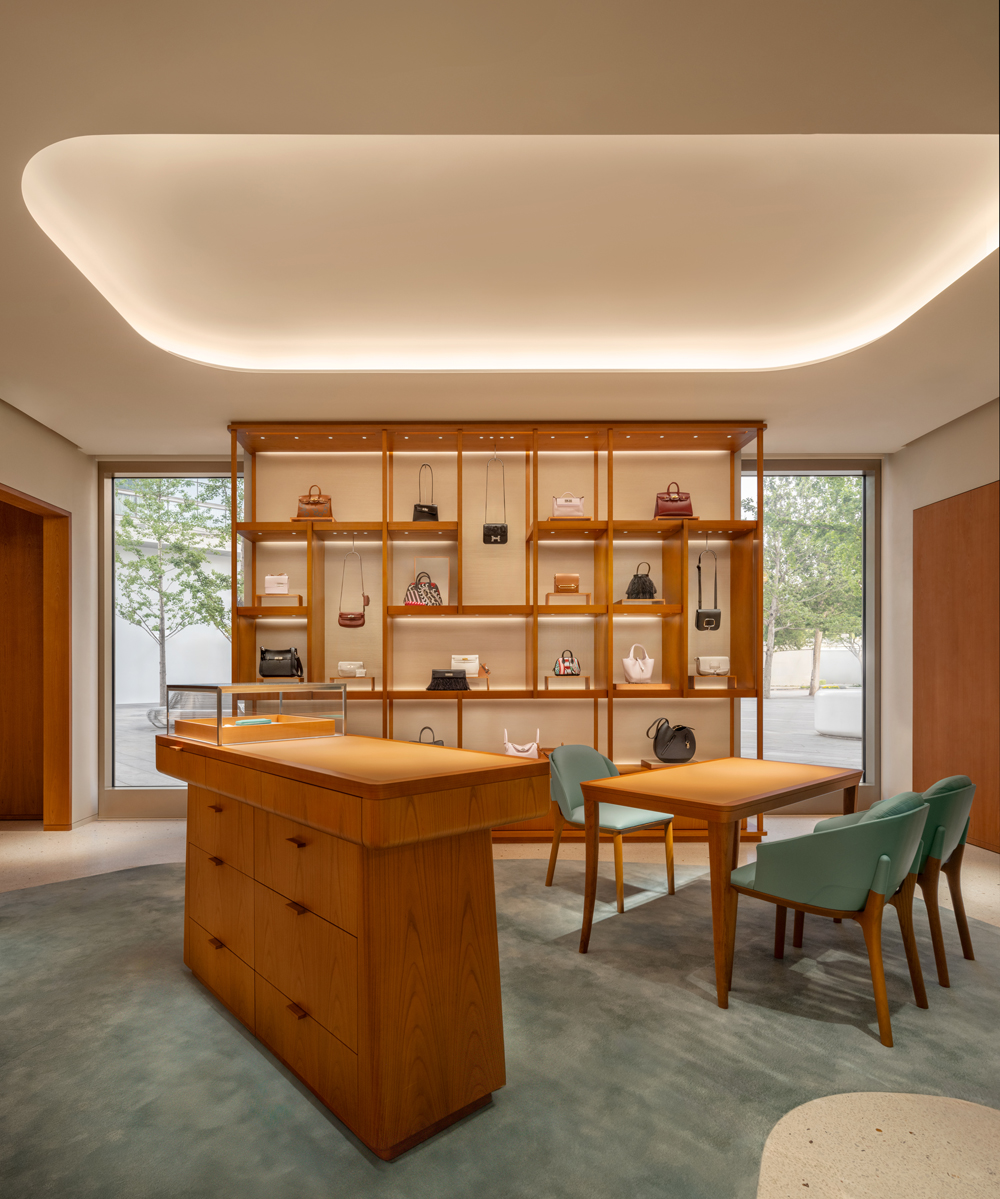On May 27, the Hermès boutique at Beijing SKP, located in the heart of the Central Business District, reopened after a comprehensive upgrade.

Hermès has a deep-rooted connection with Beijing. In 1997, Hermès officially entered the Chinese mainland market, opening its first store in the then Beijing Wangfu Hotel (now the Peninsula Beijing), marking a new development phase for the nascent Chinese luxury market.
Currently, Hermès operates 34 boutiques in China, including three in Beijing: at the Peninsula Beijing, SKP, and China World Mall.
Among the three Beijing stores, the SKP store was the last to open, following the Peninsula Beijing in 1997 and China World Mall in 2005. The SKP store (formerly Shin Kong Place) opened in 2014.
With the recent reopening, Hermès has now completed the upgrade of all three Beijing boutiques.
Luxeplace.com was invited to explore the newly revamped Hermès SKP store and brings the latest highlights of this refreshed location.
More Spacious Layout and Street-facing Facade
The new store is now located at the southernmost corner of the first floor, enjoying a relatively more spacious position, including a street-facing facade.

Luxeplace.com previously analyzed Hermès’ store-opening strategy in China. Known for its cautious retail network expansion, Hermès has been steadily expanding in China. Recently, however, Hermès has accelerated the pace of new store openings and is also increasing the store sizes while seeking better locations.
For example, among the three Beijing boutiques:
- In 2021, the China World Mall store was the first to undergo an upgrade, expanding to 1,400 square meters, making it the largest Hermès store in China by display area.
- In 2023, the Peninsula Beijing store reopened after a complete renovation, doubling its original space.
- In 2024, after relocation, the SKP store now spans over 700 square meters, doubling the size of the original store.
Store Entrance Layout
Upon entering the first floor, the women’s silk area is positioned between the perfume and beauty area and the jewelry area. These three categories create a “women’s world” entrance layout, reflecting Hermès’ consideration of different consumer segments:
- The perfume and beauty area showcases lipsticks, nail polish, cosmetics, and perfumes, targeting entry-level consumers with products priced around a thousand yuan.
- Hermès’ iconic scarves, a core brand category, appeal to a broader range of potential customers.
- The jewelry area, featuring high-end jewelry, targets high-net-worth individuals with higher spending power.

Moving inward from the first floor entrance, customers pass through sections for fashion accessories and footwear, eventually reaching the core category of leather goods and equestrian products, which represent the brand’s heritage.
The second floor is dedicated to men’s products, including ready-to-wear, silk, leather goods, and footwear, with home collections also located on this floor. Both floors feature fitting rooms and private VIP rooms.

Blending Classic Products with Creative Design
In the leather goods section, an embroidered Bolide calfskin handbag captured the attention of many guests. The Bolide, introduced in 1923, predates the more famous Kelly (1935) and Birkin (1984) bags.

Emile Hermès, the third-generation descendant of the Hermès family, brought the zipper from North America and applied it to handbags, creating the world’s first zippered handbag, the Bolide.
With its graceful lines, the Bolide has been reinterpreted in various forms over the years. For example, in the Fall/Winter 2020 collection, Hermès introduced the playful Bolide On Wheels mini handbag with external skateboard wheels.
The newly launched Bolide 1923 25 handbag features an illustration by artist Jan Bajtlik, inspired by the Hermès classic scarf pattern “La Selle Imaginaire.” The intricate embroidery incorporates weaving, twisting, and leopard print techniques, requiring a master craftsman 200 hours to complete.

Though often associated with sophistication, simplicity, and elegance, Hermès’ use of scarves reveals a playful and romantic side. Whether through geometric patterns, lively animals, exotic themes, or mythological stories, Hermès’ designs transport people into a world of imagination.
As “quiet luxury” gains popularity, high-quality, classically designed yet understated items naturally attract attention. Amid this trend, how does Hermès further differentiate its designs to enhance product recognition? Incorporating scarf-inspired styles into leather goods may be a new attempt.
Continuing Exploration of Local Culture
The new Beijing SKP boutique was once again designed by RDAI, Hermès’ preferred Parisian architectural firm, continuing its tradition of exploring local culture. The new store draws design inspiration from traditional Chinese landscape painting, paying homage to traditional culture and the scenic beauty around Beijing.
For instance, the exterior wall features textured stone with engraved line patterns reminiscent of rugged mountains shaped by flowing water. Under the light, the undulating grooves create a dynamic interplay of shadows.
Inside the store, the flowing, tiered layout echoes the local mountainous landscape. Simple lines and the use of natural colors such as reddish-brown, sand, and water blue harmoniously blend the mountain landscape with traditional Chinese art. Blue carpets laid on terrazzo floors evoke the flow of Beijing’s highland lakes.


A contemporary photograph by French landscape photographer Maxence Rifflet, titled “Yangtze River Quetang Gorge,” showcases the charm of landscape art.

| Source: Provided by Hermès, Jan Bajtlik
| Editor: Elisa



